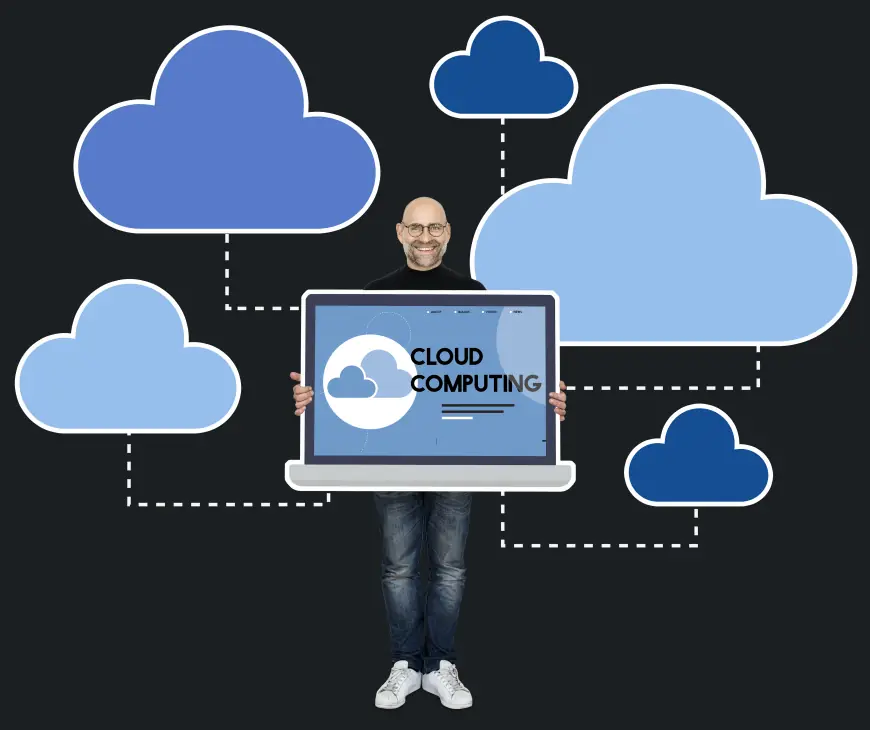What is Cloud Computing and How Does It Work?
What is cloud computing and how does it work? Learn how data storage, servers, and software are accessed online for flexibility, speed, and cost savings.

Cloud computing has become an essential part of the digital world. From individuals storing photos on Google Drive to businesses running global operations, cloud computing touches almost every aspect of our online lives. But what exactly is it, and how does it work?
This article explains cloud computing in simple terms, explores its benefits and challenges, and helps you understand how it functions behind the scenes.
Introduction to Cloud Computing
Cloud Computing Training in Chandigarh is a method of storing, managing, and processing data on remote servers rather than on your personal computer or local servers. These servers are located in data centers around the world and are accessed via the internet. Simply put, when you use cloud computing, you’re using someone else’s computer located elsewhere to do the work for you.
This model has changed how we use software, manage data, and scale businesses. It offers flexibility, reduces costs, and allows people to access data and applications from anywhere.
Why Do People Use Cloud Computing?
Many people and companies use cloud computing because it solves several problems:
-
Lack of storage: Traditional computers have limited storage space. Cloud computing offers virtually unlimited storage.
-
Maintenance issues: You don’t need to worry about hardware updates, repairs, or server maintenance.
-
Remote access: You can access your data and tools from any location with an internet connection.
-
Scalability: Businesses can easily increase or decrease their computing needs without buying expensive hardware.
Types of Cloud Computing Services
Cloud computing is broadly divided into three service models. Each serves a different purpose:
- Infrastructure as a Service (IaaS)
This is the most basic type of cloud service. With IaaS, users rent virtual machines, storage, and networks. You get complete control over the infrastructure but are responsible for installing and managing software.
Example Use Case: A company that wants to host its own applications but doesn’t want to buy servers.
- Platform as a Service (PaaS)
PaaS provides a platform with tools and environments for developers to build and deploy applications. You don’t have to manage hardware or infrastructure.
Example Use Case: A developer building a web application without managing the underlying servers.
- Software as a Service (SaaS)
This is the most common type of cloud service for everyday users. SaaS delivers software over the internet, which you can use directly through a web browser.
Example Use Case: Using an online email service or a cloud-based spreadsheet application.
Types of Cloud Deployment Models
Cloud computing also comes in different deployment models, depending on who can access the cloud and where it is hosted:
- Public Cloud
Services are offered over the internet to anyone. The infrastructure is shared among many users. It’s cost-effective and suitable for small to medium-sized businesses.
- Private Cloud
The cloud infrastructure is dedicated to a single organization. It offers more control and security but can be expensive.
- Hybrid Cloud
This model combines both public and private clouds. It allows data and applications to be shared between them, giving flexibility and better optimization.
How Cloud Computing Works
Now let’s look at what happens behind the scenes when you use cloud computing.
-
User Request: You send a request through a web browser or application—for example, to save a file or run software.
-
Internet Connection: This request travels over the internet to a cloud service provider’s data center.
-
Server Response: The provider’s servers process your request, run computations, or store your data.
-
Output Delivery: The result is sent back to your device via the internet—usually in seconds.
This entire process uses high-speed networks, virtualization technology, and load balancing systems to ensure fast and reliable performance.
Benefits of Cloud Computing
Cloud computing offers many practical advantages:
-
Cost savings: You pay only for what you use. There is no need to buy expensive hardware or pay for power and cooling.
-
Flexibility and scalability: Easily adjust your resources based on your current needs.
-
Disaster recovery: Data stored in the cloud is often backed up automatically, helping in case of accidental loss.
-
Collaboration: Teams can work together in real-time from different locations.
-
Automatic updates: Cloud services often come with regular updates that don’t require user action.
Common Challenges of Cloud Computing
Despite its many benefits, cloud computing also comes with some challenges:
- Security Concerns
Storing data on remote servers raises concerns about privacy and data breaches. It's essential to use strong passwords, enable two-factor authentication, and choose trusted service providers.
- Internet Dependency
Cloud computing requires a stable internet connection. Without it, accessing data or running applications becomes difficult.
- Limited Control
In public cloud environments, users may have limited control over the infrastructure and software configurations.
- Downtime Risks
Even large cloud providers can experience outages, temporarily making services unavailable.
Real-Life Examples of Cloud Computing
To make things clearer, here are some real-life examples:
-
Photo Backup: Using Google Photos or iCloud to store your mobile photos.
-
Streaming Services: Watching shows on platforms like Netflix, which stream content directly from cloud servers.
-
Online Learning: Platforms like Coursera host their content on cloud servers, allowing students worldwide to learn.
-
Work Collaboration: Teams using tools like Google Workspace or Microsoft 365 to collaborate on documents in real time.
How to Get Started with Cloud Computing
If you are new to cloud computing, you can start with simple services:
-
Create a free account with a cloud storage provider like Google Drive or Dropbox.
-
Try using a web-based office suite like Google Docs.
-
Explore beginner tutorials about cloud computing concepts.
-
Understand data privacy and security basics to stay safe online.
As you grow comfortable, you can explore more advanced services like setting up a website or running a virtual server.
Conclusion
Cloud computing is a powerful technology that has reshaped how we store, access, and use data. By understanding its basics—what it is, how it works, and its various forms—you can better appreciate its value in both personal and professional settings. Whether you're an individual looking for convenient storage or a business seeking scalable solutions, cloud computing offers practical tools to meet today’s digital demands.
With the right knowledge and precautions, anyone can benefit from cloud computing and use it to make life more efficient, connected, and secure.
What's Your Reaction?
 Like
0
Like
0
 Dislike
0
Dislike
0
 Love
0
Love
0
 Funny
0
Funny
0
 Angry
0
Angry
0
 Sad
0
Sad
0
 Wow
0
Wow
0


















































